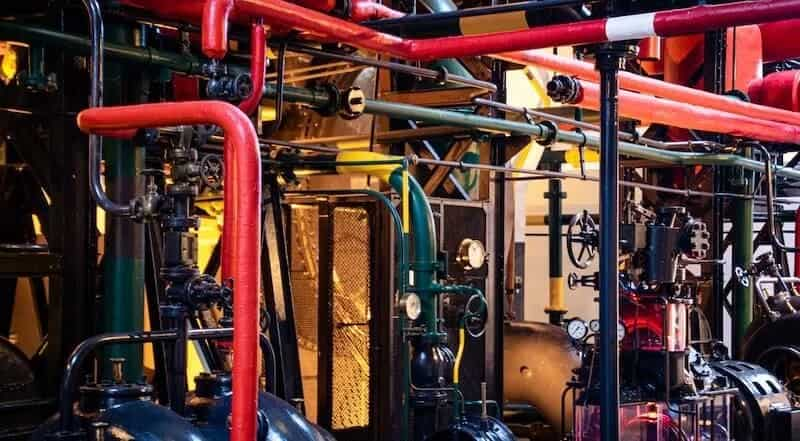A Guide To Learning About Wafer Butterfly Valves
In systems intended for unidirectional flow, the wafer-style butterfly valve is made to maintain a seal against a bi-directional pressure differential and prevent any backflow. The use of butterfly valves to isolate and control flow is expected. Similar to a ball valve, the closing component is a disc that enables rapid shutoff. Since butterfly valves are lightweight, less support is needed. This is what is wafer butterfly valve specialty. Contrary to the ball valve, the plate is always a part of the flow. Hence a pressure decrease is always brought about during flow, irrespective of the valve’s location.
Where Is A Wafer Butterfly Valve Used
Wafer butterfly valves are used in various demanding industries, including air, gas, fire protection, high pressure, and high-temperature services. The valves are reliable and practical in many industries, including those that deal with base chemicals, agrochemicals, specialty chemicals, and fluorochemicals. While working in oil industries, it becomes essential to wear gloves while handling chemicals. Considering nitrile vs latex gloves depends on the oil one is working with.
Benefits Offered By A Wafer Butterfly Valve
The wafer-type butterfly valve, also known as a flanged butterfly valve, sits between two pipe flanges and is the most widely used and least expensive form. This kind is additionally known as a universal butterfly valve. Some of the benefits are listed below:
- Wafer butterfly valves offer cost, weight, and space reductions.
- Because there are so few moving parts, wafer butterfly valves often have cheap maintenance expenses.
- Few crevices or pockets in wafer butterfly valves may retain liquids.
- Butterfly valves are an excellent choice when handling massive fluid flows of liquids or gasses at relatively low pressures.
Components Of A Wafer Butterfly Valve
The wafer-type butterfly valve has a small number of parts and stands out for its uncomplicated design, small size, and lightweight. The following are the essential wafer butterfly valve parts that everyone needs to be aware of:
1. Valve Disk
The disk, which is analogous to a plug in a plug valve, is how the valve stops the flow. Disk shape and alignment can be changed to enhance flow, sealing, and operating torque.
2. Stem
The butterfly valve’s stem can be either a two-piece (split-stem) structure or a one-piece shaft. In most robust seated designs, the stem is shielded from the media.
3. Seat
A tenacious butterfly valve uses an interfering fit between the disk border and the seat to provide a cutoff. The seat may be pushed or placed in, or stuck to the main component.
Fundamental Difference Between Wafer Butterfly Valve And Lug Butterfly Valve
Flanged butterfly valves are available, as well as WAFER or LUG-style valves that fit in between flanges. These butterfly valves can be utilized in a distribution system, an irrigation pipe, and during wastewater treatment.
1. Lug Type Butterfly Valve
A butterfly valve created using the Lug design includes threads that were tapped into what is referred to as “ears” around the body. The butterfly valve can be fastened against the two pipe flanges using two different bolts.
2. Wafer Type Butterfly Valves
A Wafer-style butterfly valve has an annular body and a few holes. There are some with two holes and some with four.
How To Install A Butterfly Valve
The user should be aware of the installation procedure since it is related to the wafer butterfly valve’s degree of sealing, whether it will be leaky or not, including the security in the operating state.
The wafer butterfly valve installation must be made flat before installation. Do not hesitate to bump. No extra approval is necessary once the installation has been made into the installation’s length for the on-site pipeline design. The wafer butterfly valve can be taken apart at one’s leisure.
The installation process must be appropriately observed. The company may need to install webcams as well. Choosing the best telehealth cameras for that purpose can be a good decision.
Statistics About Butterfly Valves
From 2021 to 2026, the market share for butterfly valves is anticipated to grow by USD 2.66 billion at a CAGR of 4.7%. This market research report on butterfly valves offers insightful information on the market’s response to COVID-19. This research in turn will aid businesses in assessing their strategic business plans for the long-term.
Conclusion
The market share rise for butterfly valves in the oil and gas sector will be significant during the predicted time frame. In the whole supply chain of the oil and gas industry, butterfly valves are used in upstream, midstream, and downstream activities. A butterfly valve marketing strategy that is predicted to be advantageous over the next few years is the growth of additive manufacturing. Driven by technological improvements, additive manufacturing is changed accordingly in several industries, progressing from prototype and testing to mass production.




